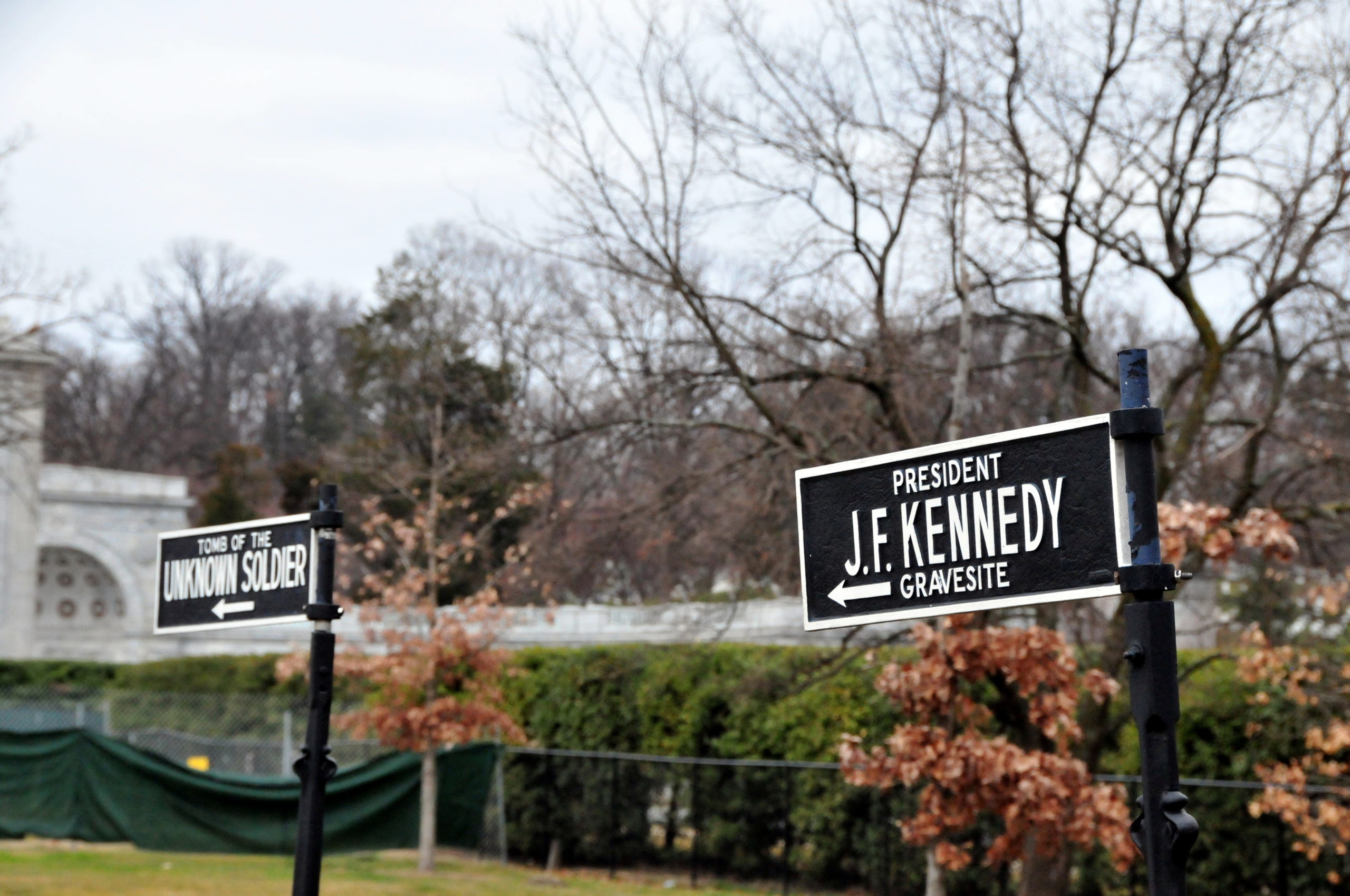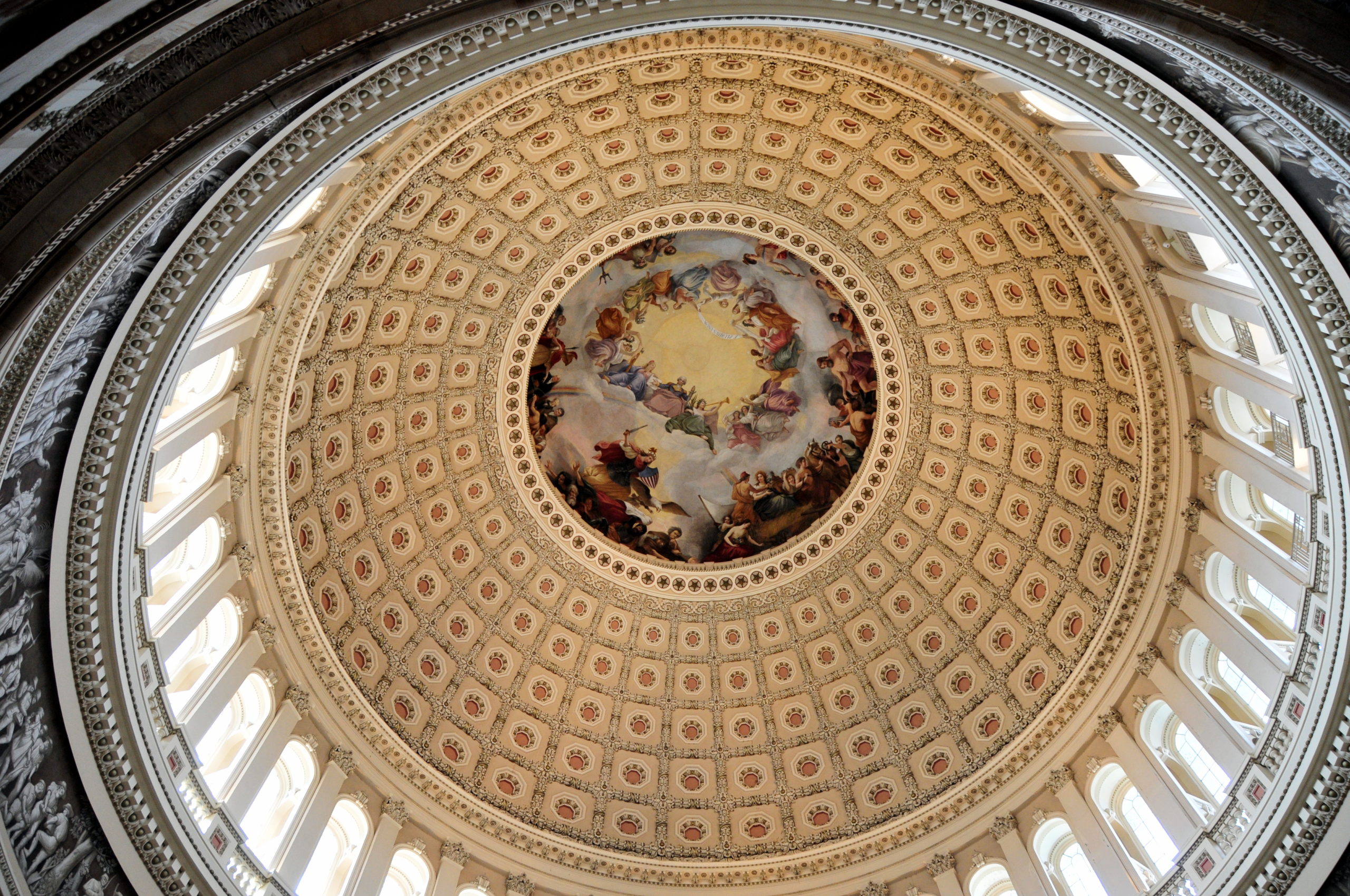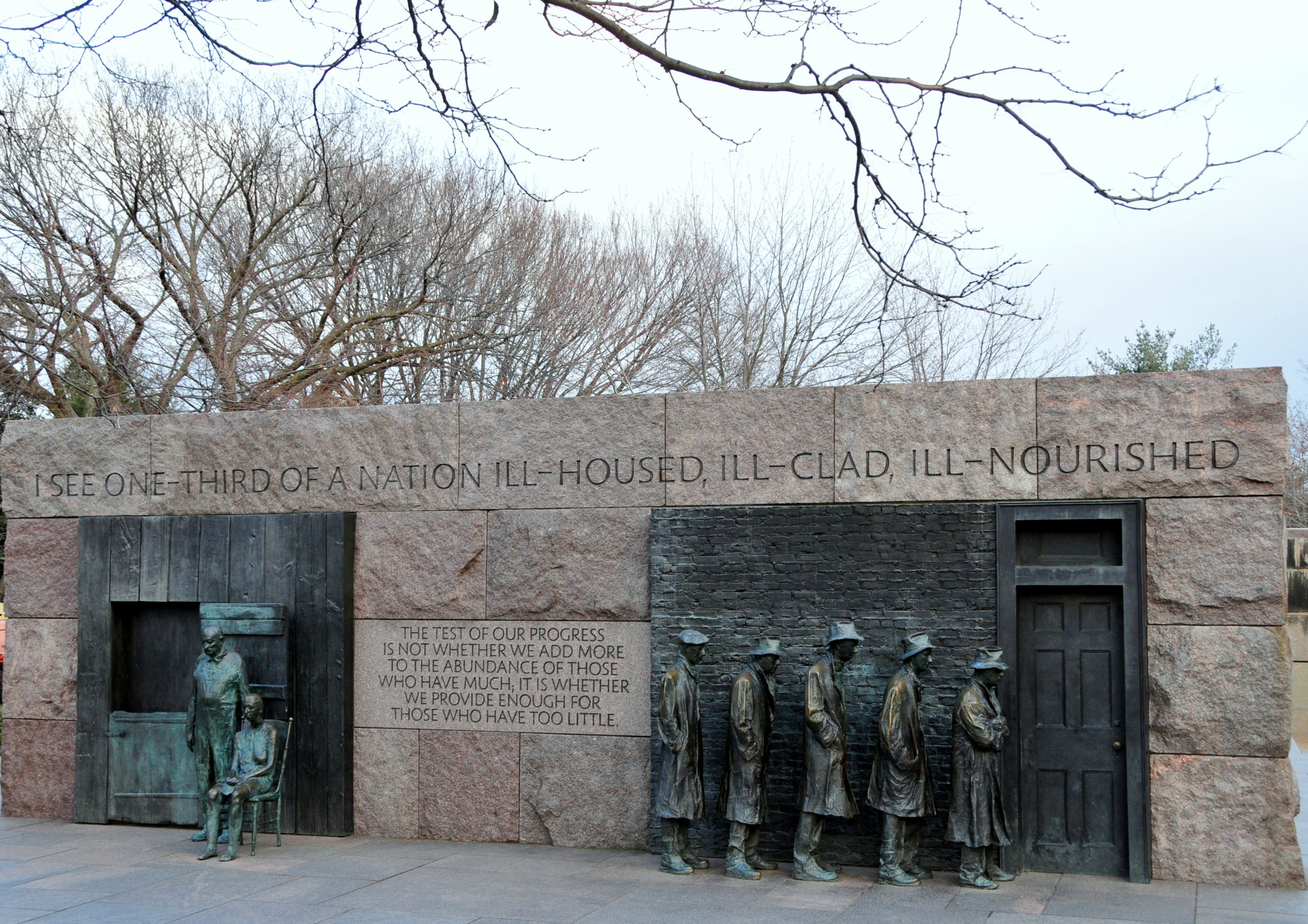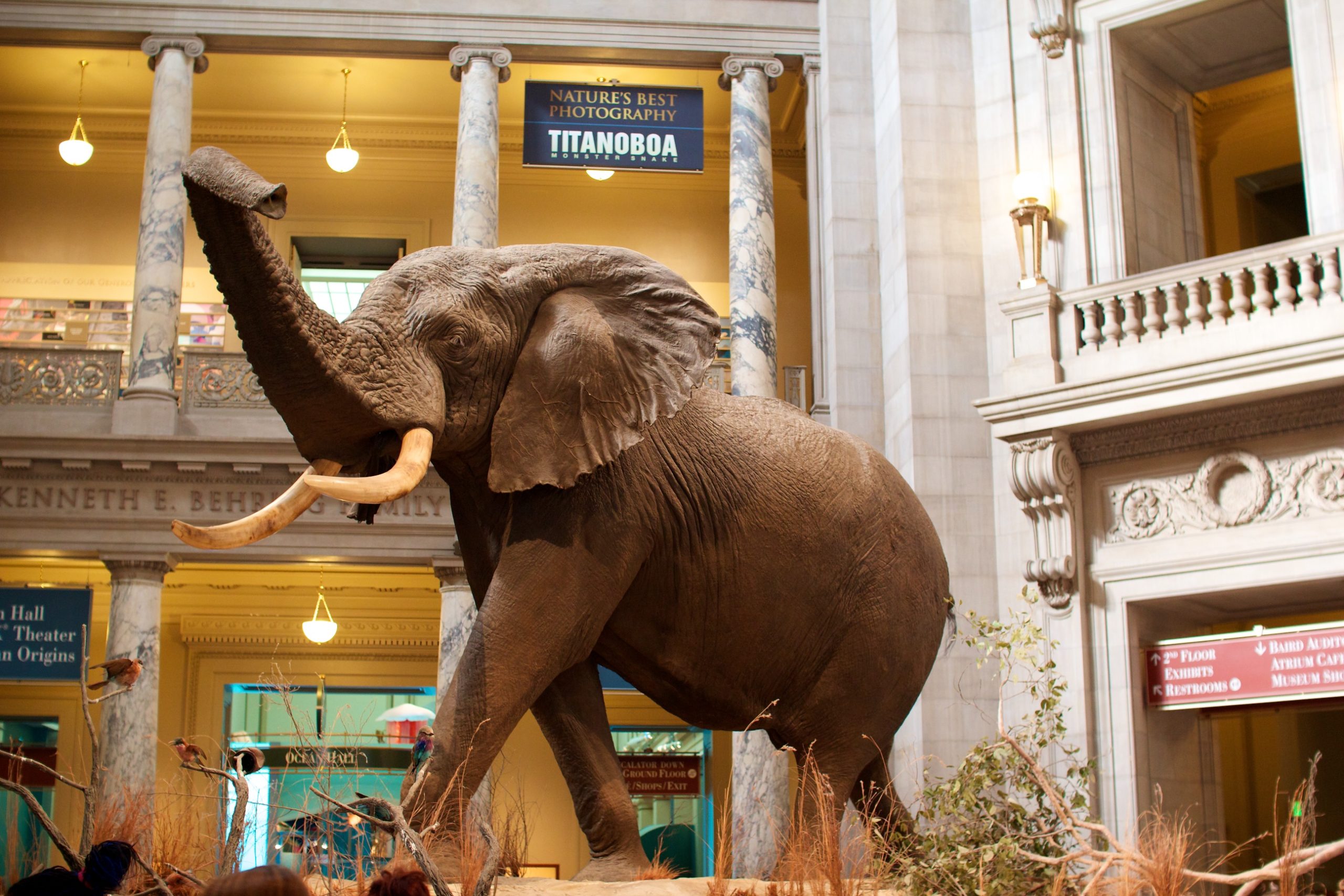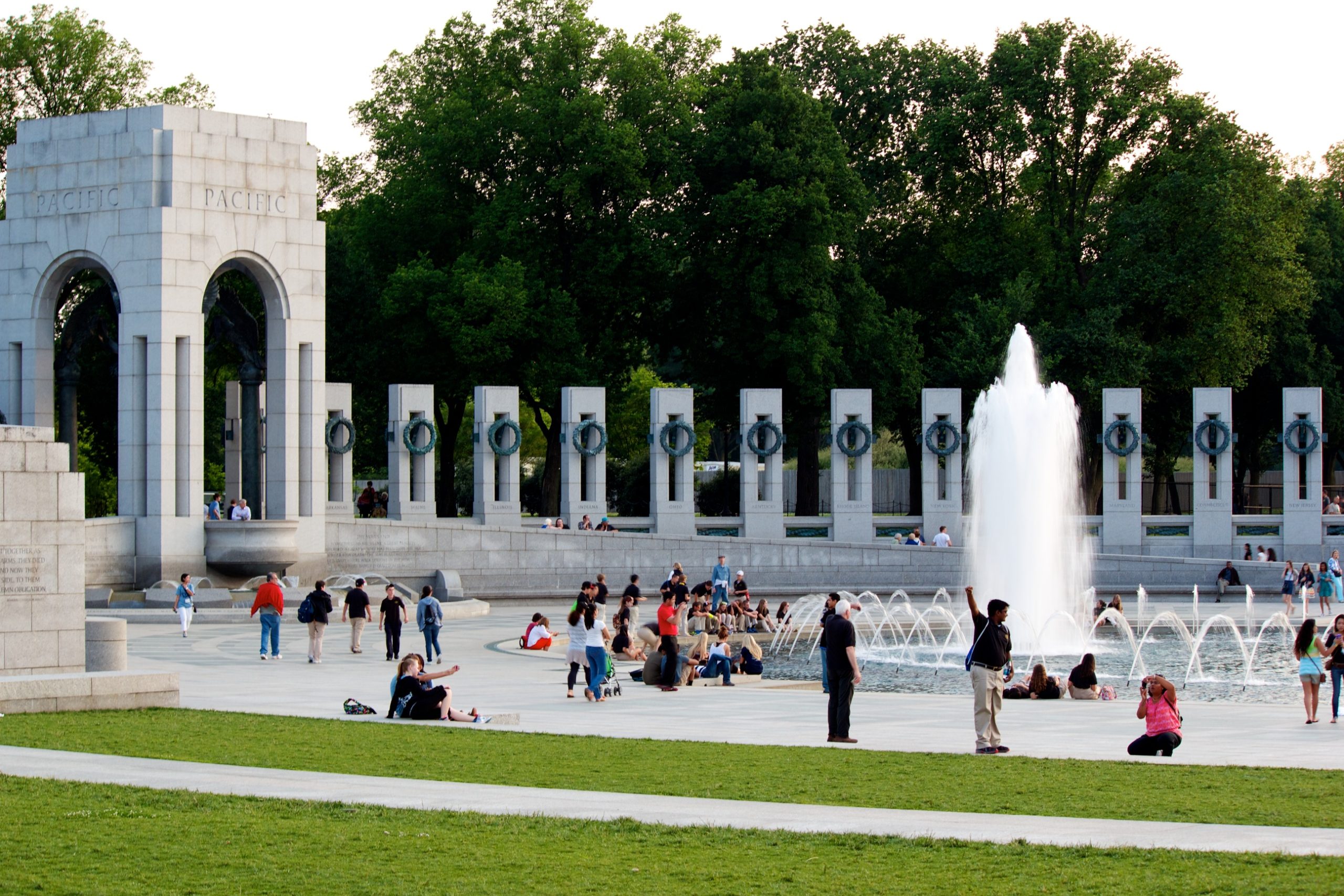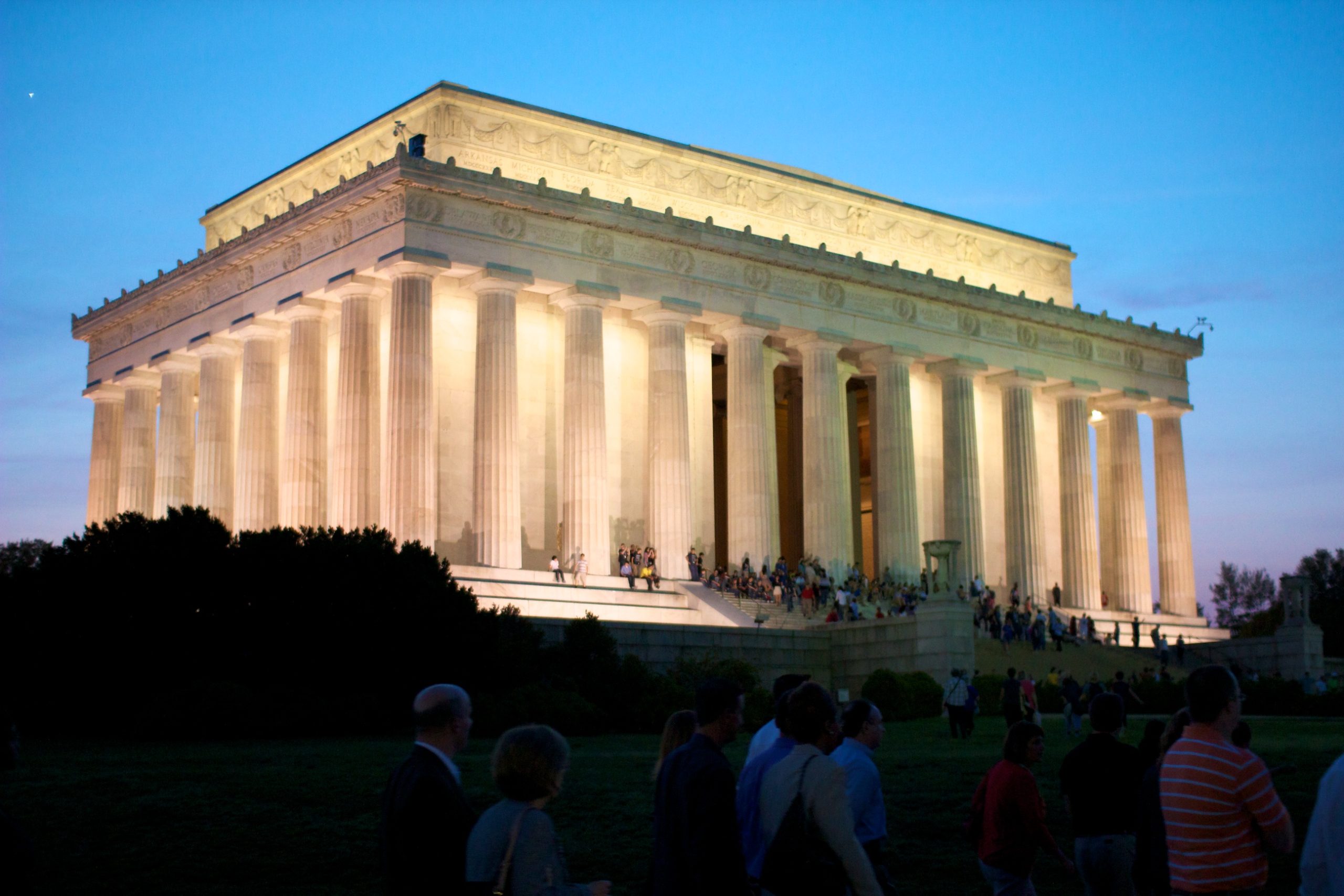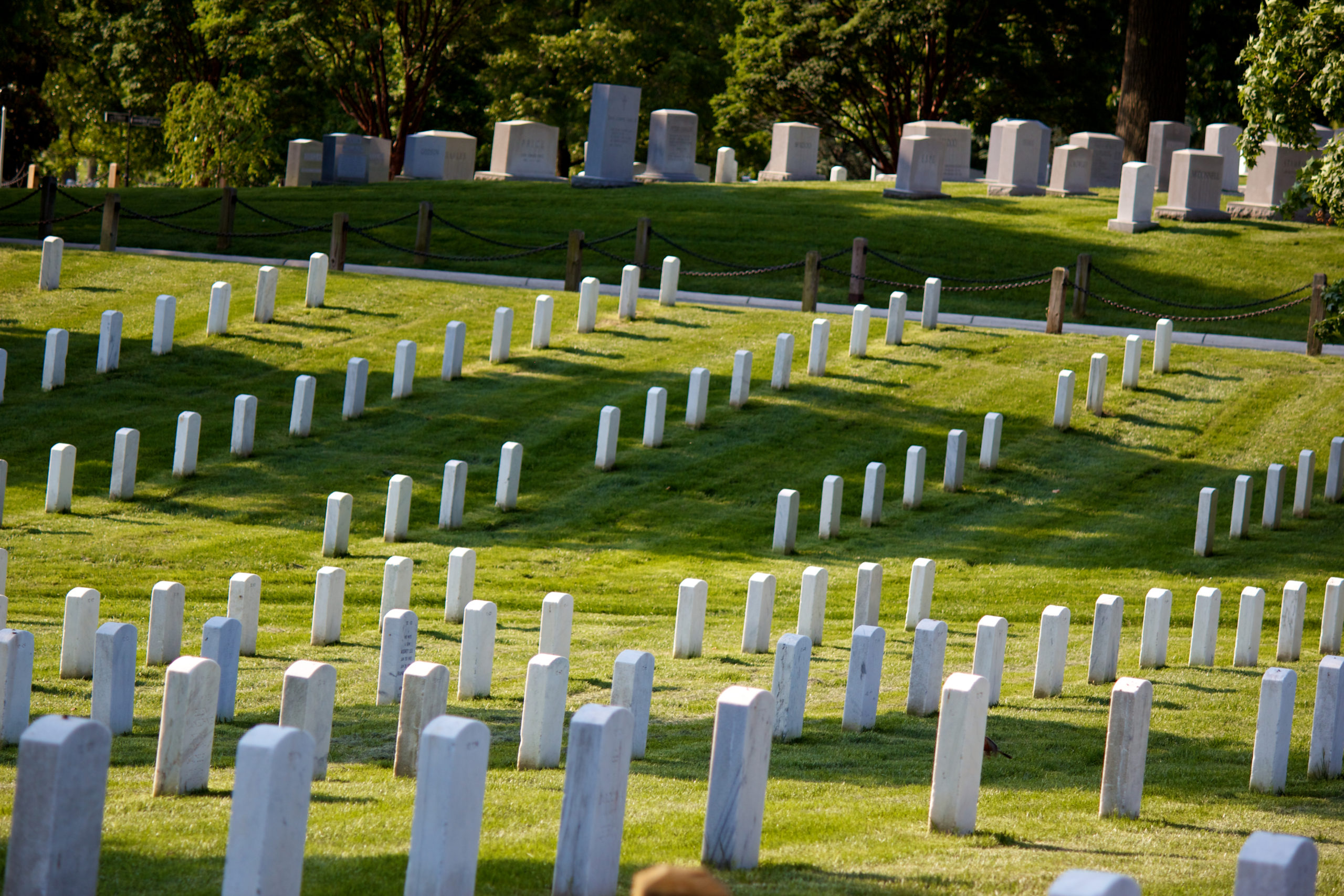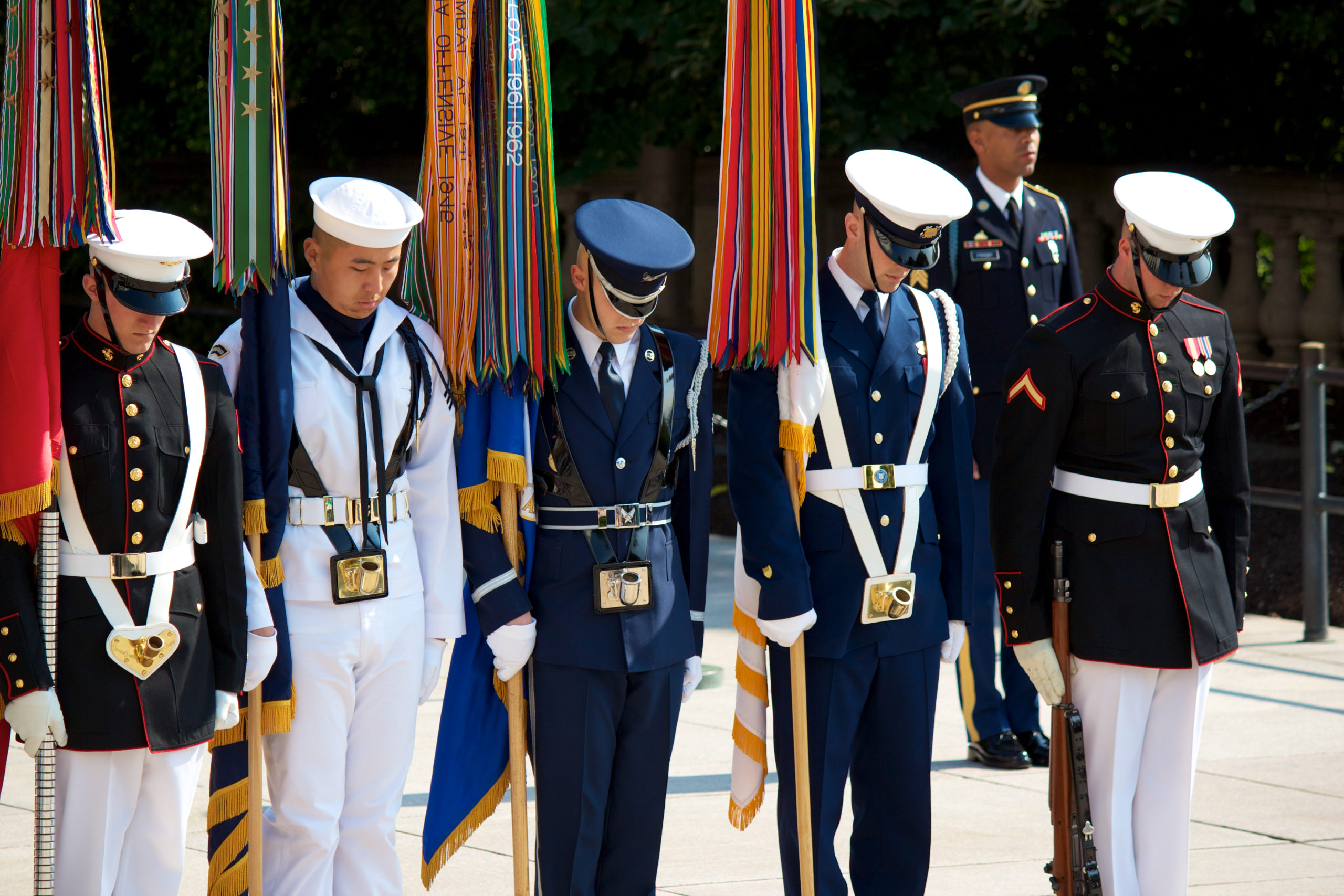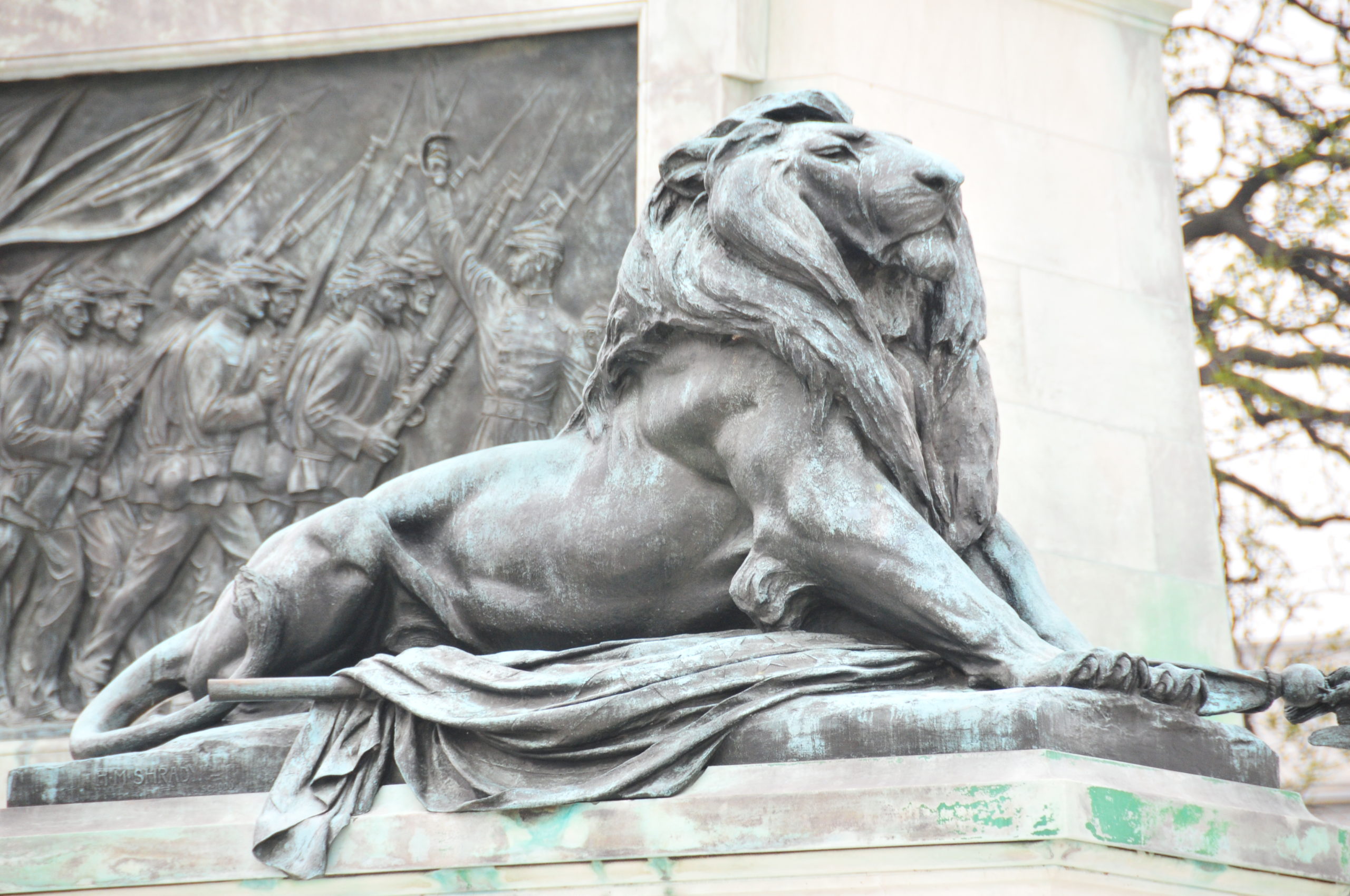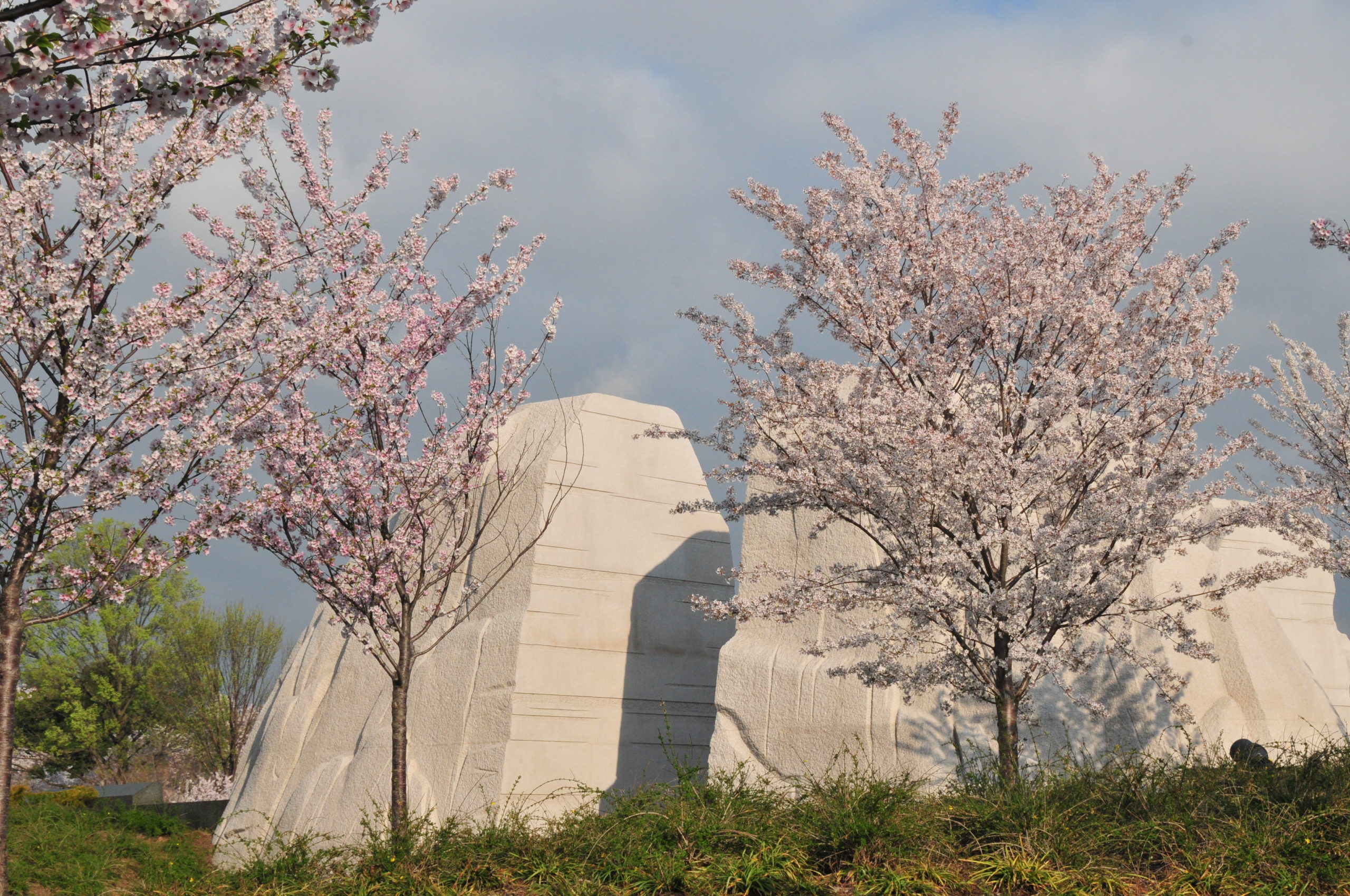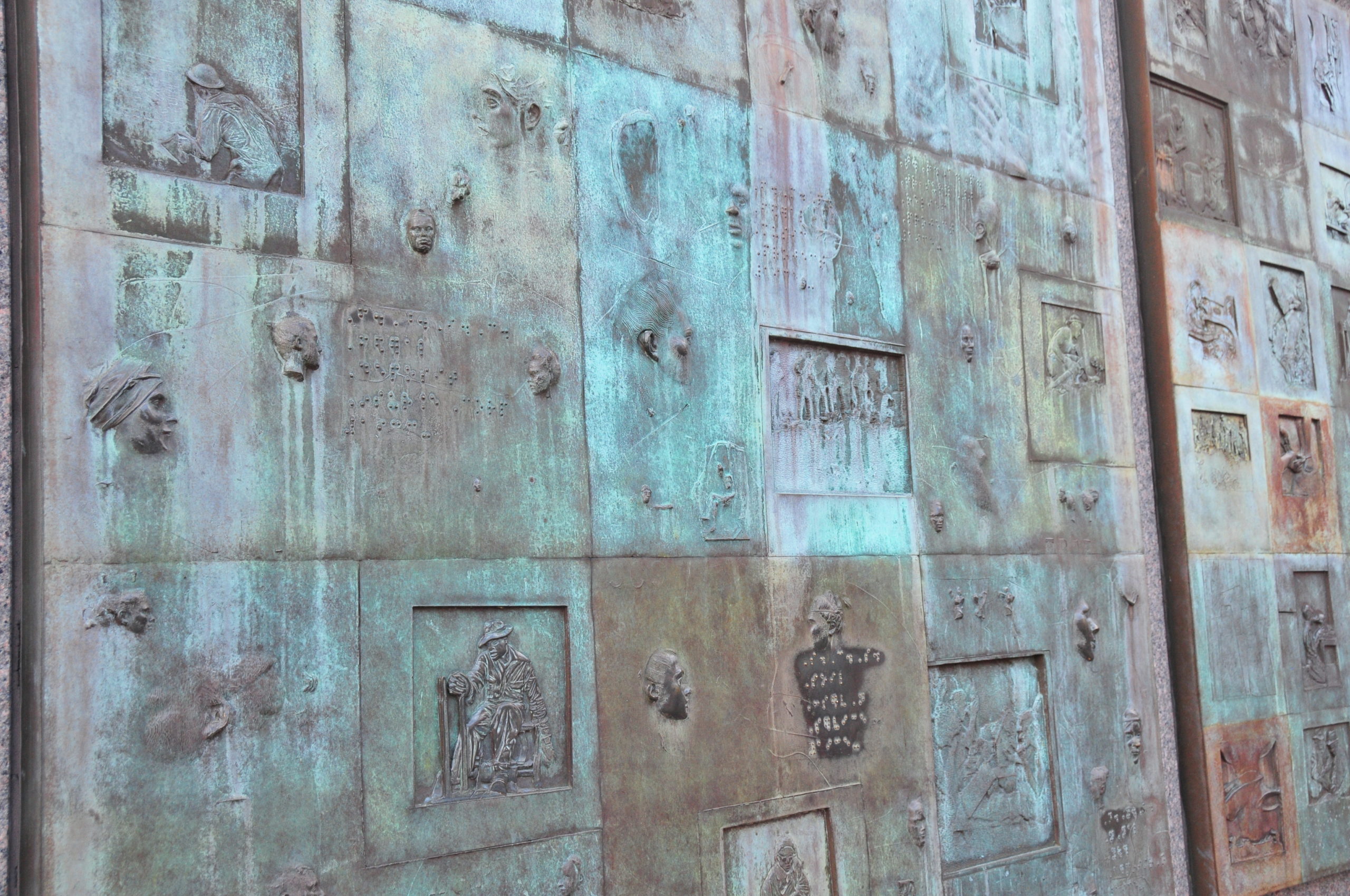Master the Art of Storytelling.
Tour leaders and travel professionals who master the art of storytelling will deliver outstanding, meaningful travel experiences time and time again.
Why Tell Stories?
A great story can transform a student tour from merely a visit to an enduring point of education and deep emotional connection. Dates and figures are quickly forgotten, but it is the great stories that are remembered. Engaging stories and hands-on experiences are what make a location real for students, what they return home talking about, and what creates a lasting impact.
Elements of a Great Story
Several elements to keep in mind as you craft your next story are:
1. Make It Personal. Great stories create emotional connections for the audience and resonate with their worldview. For you to understand the audience perspective, get to know the students on your tour. Learn their names, talk with them about their home town, ask what sports they are involved in, if they have any siblings, where they have traveled before, etc. Add relevant details or comparisons to your stories. The important thing is for them to feel like they, or someone they know well, could be a character in the story.
2. Weave in the Facts. Instead of listing facts about a particular memorial or destination site, weave them into your story as well as additional historical context. Important information is imparted without losing the audience’s attention.
3. Be Interactive. Involve the students in the story. Engage them with questions and encourage them to act as a character. Print a tale on note cards and have students read their portions. Encourage applause for those involved.
4. Invoke the Senses. Words devoted to smells add dimension to a story. Words such as “cinnamon,” “soap,” or “mint” add a layer of sensory experience and paint a more vivid scene for the students.
5. Keep it Short. Stories that keep the audience’s attention are clear throughout, with an introduction, development, and swift conclusion.
6. Keep it Simple. Use simple, uncomplicated language throughout the story. Low complexity language helps the audience to focus on and better relate to the happenings of the story.
Crafting engaging stories is a skill developed intentionally over time. Carefully selected and timely stories connect students with their destination in a meaningful way, transforming their class trip into an exciting learning experience.
Washington DC
Coming Soon!
Help our library grow! Submit a story!
Air Force Memorial
Coming Soon!
Help our library grow! Submit a story!
Arlington National Cemetery
Arlington Cemetery
- Arlington National Cemetery is built on the house grounds of Arlington House, a 19th century mansion built as a living memorial to George Washington by his step grandson, George Washington Parke Custis. It was passed onto to Mr. Custis’ only surviving daughter, Mary Anna. She became the wife of Civil War general Robert E.Lee. General Lee loved this home and served as a custodian of the property. But after Virginia seceded from the union, the property was overrun by federal troops. When Mary Anna couldn’t pay a $92.70 property tax in person, (she sent a cousin to pay the taxes, but the government refused to accept the payment) the federal government snatched it, selling it to a tax commissioner for government use. To make the house completely uninhabitable in case the Lee family ever returned, Brig. Gen. Montgomery C. Meigs turned the property into a military cemetery for Union soldiers and a community for freed slaves. By the end of the Civil War, over 15,000 soldiers were buried there. The Lee family never returned to their beloved home but 18 years later, their oldest son sued the government for the property and the Supreme Court handed it back to him stating it had been taken without due process and had to be returned in its pre-civil war condition. Knowing that this was impossible, the federal government eventually bought the land back from Custis in 1883 for $150,000.
Arlington Cemetery – Kennedy Gravesite
1) Shortly before he was assassinated, President Kennedy was touring Arlington Cemetery. He stood beside the flag pole in front of Arlington House and said to his acquaintance, “This is one of the most beautiful and serene places I have ever seen, I could stay here forever.” A spot directly below where he was standing was chosen as his final resting place.
2) It has been said that Mrs. Kennedy got the idea for the eternal flame at John F. Kennedy’s burial site from their visit to Gettysburg. In March of 1963, the Kennedy’s and their children visited the Gettysburg National Battlefield. One of the stops they made was at the Eternal Light Peace Memorial. Mrs. Kennedy was enamored by the flame and requested it for her husband’s gravesite.
Arlington Cemetery – President William Howard Taft Gravesite
- President William Howard Taft was a great baseball enthusiast. As a teenager, he was offered a contract to play baseball by the Cincinnati Reds but broke his arm shortly before the season began so he turned it down. He is the President credited with starting the tradition of having the President of the United States throw out the first pitch to officially start baseball season. Another tradition he is rumored to have started is the seventh inning stretch. Because he was such a large man, about half way through the game President Taft would have to stand up and stretch. Out of respect for the President, the whole stadium would stand up and stretch.
Arlington Cemetery – Joe Lewis Gravesite
1) Joe Louis is buried in front of the Amphitheatre near the Tomb of the Unknowns. Joe Louis known as “The Brown Bomber” beat Max Schmeling, the German boxer, the second time they fought in 1938.
- Louis first lost a match with Schmeling in 1936.
- Max Schmeling was thought of as a Nazi through the propaganda of Adolph Hitler. However, Max was found out after the war to have hidden some Jewish children in his apartment and saved their lives by helping them to flee Nazi German during WWII.
- Joe Louis enlisted in the army in 1942.
- Max Schmeling also sent money in 1981 to help pay for, the financially broken Joe Louis’ funeral in which he was also a Pall Bearer. The two actually became very good friends later in life. Max died just short of his 100th birthday in 2005.
2) Side note that many students may not care about but adults who remember Max Baer from the 60’s Television show the Beverly Hillbillies may find of interest. Max Baer Jr.’s father, Max Baer Sr. was a heavyweight boxing champion that also beat Max Schmeling before the famous match between Louis and Schmeling.
Arlington Cemetery – Stones on Tombstones
- The Jewish tradition of leaving a pebble or stone on top of a tombstone signifies that someone has honored the deceased person’s memory with a visit to the grave. Stones are solid. They stay on the grave or headstone forever while flowers, like the human body, wither and die. Stones represent the permanence of memory.
Help our library grow! Submit a story!
Basilica of the National Shrine of the Immaculate Conception
Coming Soon!
Help our library grow! Submit a story!
Blair House
Blair House was purchased by the Franklin administration in 1942 for $175,000. The idea for buying the house is said to have come from first lady Eleanor Roosevelt. Visiting foreign dignitaries stayed at the White House leaving little privacy for the First Family. Mrs. Roosevelt was leaving the White House early one morning when she encountered a man pacing the hall, a cigar in one hand and a snifter of brandy in the other. She asked him “Winston, where are you going?” He told her he was going to see Franklin. Her reply was that he had kept Franklin up half the night and he needed his rest. This seems to be the final incident of lost privacy that influenced the decision to purchase Blair house.
Help our library grow! Submit a story!
Bureau of Engraving and Printing
Coming Soon!
Help our library grow! Submit a story!
Capitol of the United States
Coming Soon!
Help our library grow! Submit a story!
Cherry Blossom Trees
Coming Soon!
Help our library grow! Submit a story!
Constitution Avenue
Coming Soon!
Help our library grow! Submit a story!
Daniel Sickels Story
Daniel Sickels was a politician from New York who had an apartment on Lafayette Square near the northeast corner of Madison Place and Pa. Ave. It is said that his wife, Theresa, was having an affair with Phillip Barton Key, the son of Francis Scott Key. One of Sickles’ aides informed him of the situation, promoting him to confront his wife. Sickle’s waited till Key came by to meet with Theresa, and then shot him on the street in front of the house. Key died a short time later in the Washington Club. The trial was a sensation when all the details were made public. After a 20day trial, Sickels was acquitted on the grounds of temporary insanity. It was the first time in American history that this was used as a defense.
When the Civil War started, Sickels was wealthy enough to raise a body of troops and receive an officer’s commission. He nearly cost the Union the Battle of Gettysburg when he abandoned Little Roundtop. Sickels was wounded in the leg by a cannonball. His leg was amputated in order to save his life. Because he thought he was a hero he had the doctor save his leg and put it in a barrel of alcohol and sent it to Washington. The leg is still kept at the Armed Forces Medical Museum at the Walter Reed Hospital.
Help our library grow! Submit a story!
Eisenhower Executive Office Building
The building was originally built to house the Departments of State, War and the Navy. Today it houses the majority of the offices of the White House. There are over 500 offices in the building and it is surrounded by over 900 columns. It took 17 years to complete construction of the building and once complete, the French Second Empire style of architecture had gone out of style. There was actual talk of tearing the building down. President Truman called it “the greatest monstrosity in America”. Mark Twain referred to it as “the ugliest building in America”. But fortunately, they came to their senses and did not waste our tax dollars and the building still stands today.
Ford's Theatre and Lincoln Museum
Coming Soon!
Help our library grow! Submit a story!
Franklin Delano Roosevelt Memorial
1) When Franklin Roosevelt was President, he once said to a group of his friends and associates, “if they ever erect a memorial to me I want it to be no larger than the size of my desk”. So, in 1965, a hunk of granite, about the size of a desk was placed on Pennsylvania Avenue at the rear of the National Archives and on it was inscribed, “In Memory of Franklin Delano Roosevelt” with the year he was born and the year he died. This was his memorial for several years until our government decided this wasn’t enough to honor this man, our only President to serve 4 terms in office, so 7 ½ acres and $48 million dollars later, he has the largest memorial in Washington, DC.
2) In front of the FDR Memorial is a statue that depicts FDR in a wheelchair. This statue was not always here. After the memorial opened, people with disabilities were disappointed to see that the memorial did not include any depiction of FDR in a wheelchair. That’s because while he was President, he had an agreement with the press that they would never show him in his wheelchair. When the memorial was built, they abided by this agreement. Advocates for people with disabilities felt that he should be depicted in a wheelchair to show that people with disabilities are capable of great things. They petitioned the government and won the right to have him shown in a wheelchair, but they weren’t permitted to put it inside his memorial. So they chose the spot directly in front of the memorial to place the statue.
3) During the Great Depression, FDR started a program called “The New Deal” in which he put people to work building post offices, parks, airports and public buildings. He provided low income houses in little villages all over the United States. One of those villages he started is called Norvelt, named after his wife, Eleanor Roosevelt and is located very close to the offices of Scholastica Travel. Many of the 250 houses that were originally built are still standing today.
Help our library grow! Submit a story!
Frederick Douglass National Historic Site
Coming Soon!
Help our library grow! Submit a story!
Holocaust Memorial Museum
Coming Soon!
Help our library grow! Submit a story!
Jefferson Memorial
1) President Franklin Roosevelt approved the design of the Jefferson Memorial which included a dome with pillars all around, against the wishes of the Memorial Committee. It was actually Thomas Jefferson who introduced the “Pantheon” style of architecture to the states and used it in both his home, Monticello and the University of Virginia. (he even submitted plans anonymously in the design contest for the White House that included a dome and pillars). When the memorial was built, they resurrected these plans, so it can be said that even though he was dead, he designed his own memorial.
2) The Memorial was dedicated by President Roosevelt on April 13, 1943, marking what would have been Thomas Jefferson’s 200th birthday. After the dedication, President Roosevelt returned to the White House and stepped out onto the Truman Balcony hoping to get a glimpse of the monument but his view was obstructed. The famous cherry trees that line the Tidal Basin were blocking his view. He instructed his aides to cut them down. The women of Washington got wind of his plan to chop down the cherry trees. Not wanting their precious cherry trees to be destroyed, they went and tied themselves to the trees. Who do you think won this battle? (I don’t give away the answer, but make the kids climb to the top of the steps at the center of the Memorial and look across the Tidal Basin to the left of the Washington Monument and tell me what they see) They will learn that the President won the battle and the cherry trees are gone. I then tell them “the rest of the story”. It was a very hot day and the poor ladies were very warm and parched. In an attempt to be nice to the ladies, the police officers started bringing them big tall glasses of icy lemonade. So, what happens after you’ve had several big tall glasses of icy lemonade? You guessed it, and being proper ladies, they had to untie themselves and take care of business.
3) Jefferson was a very intelligent man. To illustrate this, I refer to a story involving President John F Kennedy. When President Kennedy was in office, he held a dinner at the White House to which all of the Nobel Prize winners of the Western Hemisphere were invited. He welcomed them by saying: This is the most extraordinary collection of talent, of human knowledge, that has ever dined together at the White House, with the exception of when Thomas Jefferson dined here alone.
Help our library grow! Submit a story!
Kennedy Center for the Performing Arts
Coming Soon!
Help our library grow! Submit a story!
Korean Memorial
Even though there are 19 soldiers, when you look at the reflection in the wall, it appears to be 38 representing the 38th parallel over which the war was fought.
- It has been said that only 3 of the soldiers could possibly be Marines. Only the soldiers with their helmet straps fastened could be Marines because they have such a strict dress code that even in war they must abide by it.
- If you stand at the flagpole and look back through the soldiers, you will see the last few coming through the trees, but is it really just a few or are there thousands of soldiers emerging from the woods?
Help our library grow! Submit a story!
LaFayette Square Park
Coming Soon!
Help our library grow! Submit a story!
Library of Congress
Coming Soon!
Help our library grow! Submit a story!
Lincoln Memorial
1.) 3 Myths about the Statue:
- Some believe that the hands of Lincoln in the statue form the American Sign Language letters of “A” and “L” representing Lincoln’s initials. Most people think this is true. After all, Lincoln did sign the charter starting the first school for the deaf “Gallaudet University” which is still in existence today.
- Some people believe that you can see “2 sides of the man” when you look at the profile of Lincoln. One fist is clenched representing his power and strength and the other is relaxed representing his compassion and softer side.
- Some believe that if you look at the back of his head, you can see a profile of Robert E Lee.
2) Martin Luther King Jr. gave his “I Have a Dream” speech on the steps of the Lincoln Memorial. King’s speech was the grand finale of the August 28, 1963, “March on Washington for Jobs and Freedom.” The march drew 200,000 supporters.
3) Marion Anderson Story:
- Marion Anderson was a famous black singer recognized in both Europe and the United States. In April of 1939, she was invited to sing in Washington, DC by Howard University. The only hall big enough to hold the crowd that they knew she would draw was Constitution Hall owned by the Daughters of the American Revolution, a conservative organization of women who trace their ancestry to the American Revolution They refused to allow her to sing there because of her race. Therefore, a stage was built on the steps of the Lincoln Memorial and Marion Anderson sang to over 75,000 people there. Upon hearing what had transpired, Eleanor Roosevelt immediately resigned her membership in the Daughter of the American Revolution.
4) There are 2 “errors” on the monument:
- The year Ohio became a state is incorrect. It should be listed as 1803, but the monument displays 1802.
- In his 2nd Inaugural Address on the right wall, the word Future was originally carved as “Euture”. A correction was made but you can still see the mistake.
Help our library grow! Submit a story!
Marine Corps Memorial | Iwo Jima Memorial
1) Some people believe that even though there are just 6 men raising the Flag atop Mt Suribachi, there are 13 hands on or reaching for the flag pole. They believe that the 13th hand is the hand of God.
2) The Boys of Iwo Jima Story as told by James Bradley: ‘My name is James Bradley and I’m from Antigo, Wisconsin … My dad is on that statue, and I just wrote a book called ‘Flags of Our Fathers’ which is #5 on the New York Times Best Seller list right now. It is the story of the six boys you see behind me.
‘Six boys raised the flag. The first guy putting the pole in the ground is Harlon Block. Harlon was an all-state football player. He enlisted in the Marine Corps with all the senior members of his football team. They were off to play another type of game. A game called ‘War.’ But it didn’t turn out to be a game. Harlon, at the age of 21, died with his intestines in his hands. I don’t say that to gross you out, I say that because there are people who stand in front of this statue and talk about the glory of war. You guys need to know that most of the boys in Iwo Jima were 17, 18, and 19 years old – and it was so hard that the ones who did make it home never even would talk to their families about it.
(He pointed to the statue) ‘You see this next guy? That’s Rene Gagnon from New Hampshire. If you took Rene’s helmet off at the moment this photo was taken and looked in the webbing of that helmet, you would find a photograph…a photograph of his girlfriend. Rene put that in there for protection because he was scared. He was 18 years old. It was just boys who won the battle of Iwo Jima … Boys. Not old men.
‘The next guy here, the third guy in this tableau, was Sergeant Mike Strank. Mike is my hero. He was the hero of all these guys. They called him the ‘old man’ because he was so old. He was already 24. When Mike would motivate his boys in training camp, he didn’t say, ‘Let’s go kill some Japanese’ or ‘Let’s die for our country.’ He knew he was talking to little boys. Instead he would say, ‘You do what I say, and I’ll get you home to your mothers.’
‘The last guy on this side of the statue is Ira Hayes, a Pima Indian from Arizona…Ira Hayes was one who walked off Iwo Jima…He went into the White House with my dad. President Truman told him, ‘You’re a hero’. He told reporters, ‘How can I feel like a hero when 250 of my buddies hit the island with me and only 27 of us walked off alive?’
So you take your class at school, 250 of you spending a year together having fun, doing everything together. Then all 250 of you hit the beach, but only 27 of your classmates walk off alive. That was Ira Hayes. He had images of horror in his mind. Ira Hayes carried the pain home with him and eventually died dead drunk, face down at the age of 32 (ten years after this picture was taken).
‘The next guy, going around the statue, is Franklin Sousley from Hilltop, Kentucky. A fun-lovin’ hillbilly boy. His best friend, who is now 70, told me, ‘Yeah, you know, we took two cows up on the porch of the Hilltop General Store. Then we strung wire across the stairs so the cows couldn’t get down. Then we fed them Epsom salts. Those cows crapped all night.’ Yes, he was a fun-lovin’ hillbilly boy. Franklin died on Iwo Jima at the age of 19. When the telegram came to tell his mother that he was dead, it went to the Hilltop General Store. A barefoot boy ran that telegram up to his mother’s farm. The neighbors could hear her scream all night and into the morning. Those neighbors lived a quarter of a mile away.
‘The next guy, as we continue to go around the statue, is my dad, John Bradley, from Antigo, Wisconsin, where I was raised. My dad lived until 1994, but he would never give interviews. When Walter Cronkite’s producers or the New York Times would call, we were trained as little kids to say ‘No, I’m sorry, sir, my dad’s not here. He is in Canada fishing. No, there is no phone there, sir. No, we don’t know when he is coming back.’ My dad never fished or even went to Canada. Usually, he was sitting there right at the table eating his Campbell ‘s soup. But we had to tell the press that he was out fishing. He didn’t want to talk to the press.
‘You see, like Ira Hayes, my dad didn’t see himself as a hero. Everyone thinks these guys are heroes, ’cause they are in a photo and on a monument. My dad knew better. He was a medic. John Bradley from Wisconsin was a caregiver. In Iwo Jima he probably held over 200 boys as they died. And when boys died in Iwo Jima, they writhed and screamed, without any medication or help with the pain.
‘When I was a little boy, my third grade teacher told me that my dad was a hero. When I went home and told my dad that, he looked at me and said, ‘I want you always to remember that the heroes of Iwo Jima are the guys who did not come back. Did NOT come back.’
‘So that’s the story about six nice young boys. Three died on Iwo Jima, and three came back as national heroes. Overall, 7,000 boys died on Iwo Jima in the worst battle in the history of the Marine Corps. My voice is giving out, so I will end here. Thank you for your time.’
Help our library grow! Submit a story!
Martin Luther King Jr. Memorial
Coming Soon!
Help our library grow! Submit a story!
George Mason Memorial
Tucked away near the Thomas Jefferson Memorial is the George Mason Memorial. George Mason was one of the founding fathers that did not sign the Constitution because as he was an Anti-Federalist (they were a group of individuals such as Samuel Adams, Thomas Paine, and Patrick Henry, that were against the idea of the Federal Government having more powers than that of the states or of the people over themselves and the Anti- Federalist felt that the newly written Constitution gave such power heavily to the Federal Government). It was the Anti-Federalists that insisted on the Bill of Rights being written to return certain personal liberties to the people. The Anti-Federalists preferred the Articles of Confederation over the newly written Constitution. James Madison then penned the first Ten Amendments to the Constitution, called the Bill of Rights.
Mount Vernon
Coming Soon!
Help our library grow! Submit a story!
National Archives
Coming Soon!
Help our library grow! Submit a story!
National Air and Space Museum
Coming Soon!
Help our library grow! Submit a story!
National Museum of American History
Coming Soon!
Help our library grow! Submit a story!
National Museum of Natural History
Coming Soon!
Help our library grow! Submit a story!
Netherlands Carillion
Coming Soon!
Help our library grow! Submit a story!
Newseum
Pentagon
Coming Soon!
Help our library grow! Submit a story!
Pentagon 911 Memorial
Coming Soon!
Help our library grow! Submit a story!
Peterson House
Coming Soon!
Help our library grow! Submit a story!
Second Division Monument
Coming Soon!
Help our library grow! Submit a story!
Smithsonian Institution
Coming Soon!
Help our library grow! Submit a story!
St. John’s Episcopal Church
Coming Soon!
Help our library grow! Submit a story!
Supreme Court
Coming Soon!
Help our library grow! Submit a story!
Vietnam Veterans Memorial
1) The designer of the wall was Maya Lin, a student at Yale who was from Ohio. Lin also submitted her design for a class project and got a B+ on it. Her professor had submitted a design also that was rejected.
2) Every day, people leave objects at the wall. These items include a motorcycle, metals of honor, dog tags, musical instruments, bottles of various spirits, letter, notes, pictures, candy, toys, cigarettes, poems, mickey mouse ears, a football and so on….over 400,000 items in all. Each evening all nonperishable items are collected and cataloged (date found, where found, if there’s a name associated with the object, etc). They are taken to a warehouse and stored to hopefully be put on display at the Vietnam Wall Education Center which is currently in the funding stages.
Vietnam Soldiers Memorial
1) Look at the 3 soldiers. You can see the soldier on the right wears his dog tags around his neck. Where are the middle soldier’s dog tags and why are they there? (the dog tags are interlaced in his boot strings. Soldiers sometimes did this to prevent the enemy from hearing them clang together if they were around their neck and to prevent the sun shining a reflection and giving away their position)
2) I was once told by a member of the military that whomever designed the Soldier’s Memorial must not have been in the military. He said that anyone in the military knows that you never carry your bullets facing up (see soldier on the left) they should always be carried facing down.
Vietnam Nurses Memorial
1) The three nurses depicted in the Nurses Memorial are thought to represent the virtues of Faith, Hope and Charity. Can you tell which are which? (the nurse on her knees represents Faith, the one looking up is Hope and the nurse coming to the aid of the wounded soldier would be Charity)
2) The Nurses Memorial was designed by Glenna Goodacre. She also designed something that you all may be familiar with, you might even have one in your pocket. What is it? (she was the designer of the Sacagawea Gold Dollar Coin)
Help our library grow! Submit a story!
Washington Monument
1) Construction of the Washington Monument began in 1848, but after 6 years it had only reached the 156’ level and construction stopped when funds evaporated. It sat that way for over 20 years before Congress allocated the funds to complete it. It was finally completed in 1884. You can notice a marked difference in the color of the stone about 1/3 of the way up.
2) Mark Twain spent time in Washington, DC both when he was a teenager and again when he became a journalist. He actually wrote some articles for the Washington Post and did some of his more famous writings in DC. During his time in DC, he observed the partially finished Washington Monument and nick named it the “Memorial Chimney”, a name that stuck for several years.
3) When the monument first opened, the only way women and children could reach the top to see the wonderful view was to walk up 897 steps and 50 landings. There was a steam operated elevator but only men were allowed to use it. They felt it was “unsafe” for women and children, so they had to walk up those 897 steps! Later, in 1901, an electric elevator was added and available for all.
Help our library grow! Submit a story!
White House
1) I once asked a police officer why are the entrances to the White House referred to as the North Front Entrance and the South Front Entrance. He replied that to be politically correct, they always want guest to feel they have been brought in through the front door, so both sides are referred to as the front.
2) Murder on Pennsylvania Avenue – Daniel Sickles was a New York politician and controversial Union general during the American Civil War. He maintained a home at Lafayette Square right on Pennsylvania Ave. Mr. Sickles believed that Philip Barton Key, who was the son of Francis Scott Key, had amorous intentions toward his wife. In Feb. of 1859, Mr. Sickles confronted Mr. Keys on Pennsylvania Ave and shot and killed him. He pleaded temporary insanity and was the first person in the history of our country to get away with murder by pleading temporary insanity. He went on to become a general in the Civil War. During the Battle of Gettysburg, he disobeyed the orders of his commanding officer. Sickles insubordination led to the near destruction of his corps and a severe wound that required the amputation of his right leg. He had his leg preserved and sent to the Army Medical Museum in Washington, DC where he would visit it every year on the anniversary of the amputation. It is still on display there today.
3) The burning of the White House by the British in 1814 -Dolley Madison fled the White House only hours before it was attached by the British. She took with her state papers, important pieces of silver and the ultimate symbol of the country, the full length portrait of George Washington. Dolley had expected to serve dinner to 40 military and cabinet officers that evening so preparation had begun. Instead, the British troops stormed the White House and consumed the meal she had prepared before looting the house and then set fire to it.
Help our library grow! Submit a story!
White House Ellipse
Coming Soon!
Help our library grow! Submit a story!
Willard Hotel
1) Legend has it that to escape the hustle and bustle of the White House, President Grant would often walk down Pennsylvania Ave to the Williard Hotel. He could be found in the lobby of the hotel smoking his cigar and drinking his whiskey. It soon became widely known that if you want to talk to President Grant and express your political views, the Williard is where you could find him. President Grant is credited with coining the term “lobbyists” in the United States.
2) Other notable guests of the Williard Hotel: Martin Luther King is said to have put the finishing touches on his “I Have a Dream Speech”. Abraham Lincoln was a guest of the Williard Hotel shortly before his inauguration when an assassination threat was made against his life. Julia Ward Howe, while at the Willard, wrote the words to “The Battle Hymn of the Republic”
World War II Memorial
Kilroy was a 46-year old shipyard worker from Halifax, Massachusetts and, during the war, he worked as a checker at the Fore River Shipyard in nearby Quincy. His job was to go around and check on the number of rivets completed. Riveters were on piece-work and got paid by the rivet. Kilroy would count a block of rivets and put a check mark in chalk, so the rivets wouldn’t be counted twice. When he went off duty, the riveters would erase the mark. Later on, an off-shift inspector would come through and count the rivets a second time, resulting in double pay for the riveters.
One day Kilroy’s boss called him into his office. The foreman was upset about all the wages being paid to riveters, and asked him to investigate. It was then that he realized what had been going on.
The tight spaces he had to crawl in to check the rivets didn’t lend themselves to lugging around a paint can and brush, so Kilroy decided to stick with chalk. He continued to put his check mark on each job he inspected, but he added “Kilroy Was Here” in king-size letters next to the check. Once he did that, the riveters stopped wiping away his marks.
Ordinarily the rivets and chalk marks would have been covered up with paint. With war on, however, ships were leaving the Quincy yard so fast that there wasn’t time to paint them. As a result, Kilroy’s inspection “trademark” was seen by thousands of servicemen who boarded the troopships the yard produced. His message apparently rang a bell with the servicemen, because they picked it up and spread it all over Europe and the South Pacific. Before the war’s end, “Kilroy” had been here, there, and everywhere on the long haul to Berlin and Tokyo. Along the way, someone added the sketch of the chap with the long nose peering over the fence, and that became part of the Kilroy message.
To the unfortunate troops outbound in those ships, however, he was a complete mystery — all they knew for sure was that he had “been there first.” As a joke, U.S. servicemen began placing the graffiti wherever they landed, claiming it was already there when they arrived.
Kilroy became the U.S. super-GI who had always “already been” wherever GIs went. It became a challenge to place the logo in the most unlikely places imaginable (it is said to be atop Mt. Everest, the Statue of Liberty, the underside of the Arch De Triumphe, the Berlin Wall and even scrawled in the dust on the moon.)
In 1945, an outhouse was built for the exclusive use of Roosevelt, Stalin, and Churchill at the Potsdam conference. The first person inside was Stalin, who emerged and asked his aide (in Russian), “Who is Kilroy?”.
Help our library grow! Submit a story!


